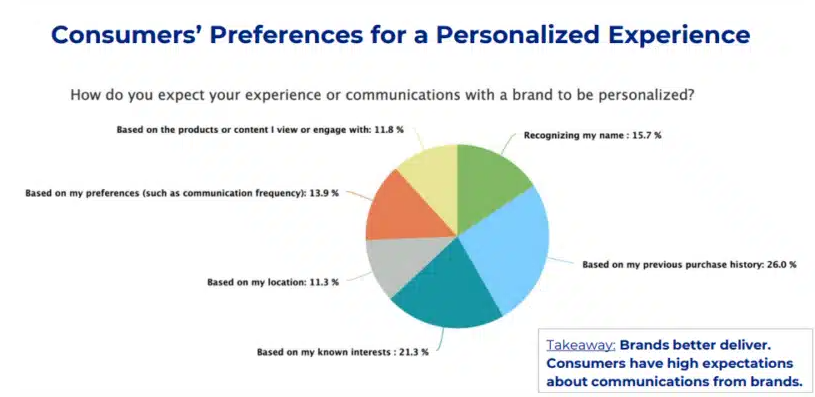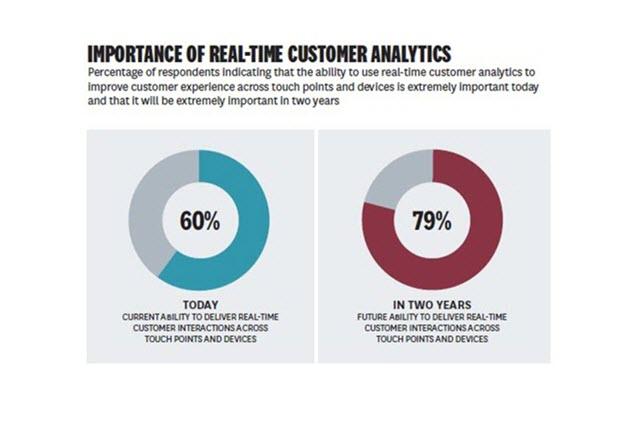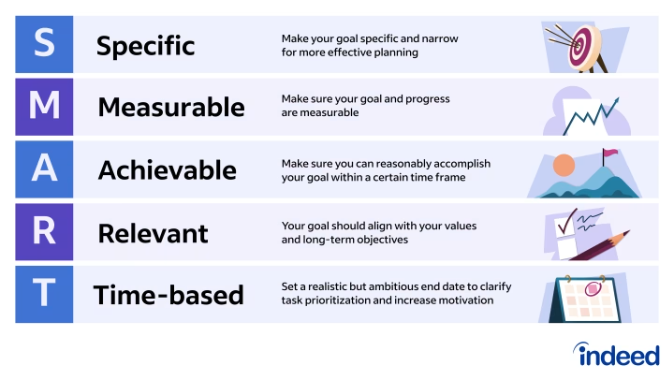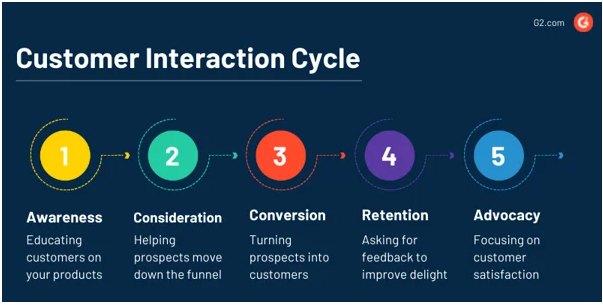In 2024, an omnichannel strategy is not just a trend; it’s a guiding principle reshaping the foundations of digital marketing and generating 80% of in-store visits. In dynamic retail, the term “omnichannel” has transformed from a mere buzzword to a strategic imperative, and understanding this robust evolution is paramount. Picture this: a consumer seamlessly transitioning from an engaging Instagram post to an in-store experience, all while expecting a personalized journey. This transition is the essence of omnichannel retail, and its importance cannot be overstated.
In this article, we’ll unravel the intricacies of omnichannel retail, shedding light on key insights that are often overlooked in the broader discourse. Beyond the basics, we delve into the crux of what distinguishes a merely functional strategy from a transformative one. Thus, the purpose of this piece is clear – to equip you with actionable takeaways that go beyond the conventional wisdom. We’re not just going to scratch the surface; we’re diving deep into the nuanced trends that are defining omnichannel customer engagement in 2024. From the rise of social commerce to the intricacies of data-driven decision-making, this article is your comprehensive guide to mastering the omnichannel symphony. Let’s explore the future of retail together, navigating the complexities of omnichannel retail and understanding why it’s not just a strategy but a journey – a journey that, when mastered, can redefine the very essence of your brand.
Difference between omnichannel and multichannel retail

While some may view omnichannel as an extension of multichannel, it’s crucial to recognize that these are distinct and separate models, each with its unique characteristics and implications. In a multichannel approach, retailers leverage as many channels as possible but often manage them in isolation. The focus here is on expanding the reach of product offerings across diverse platforms.
Conversely, omnichannel commerce introduces a paradigm shift by centralizing data management, ensuring synchronization across all existing channels. Whether employing a separate inventory allocation or a shared inventory strategy, the emphasis is on creating a seamless shopping experience that blurs boundaries among channels. The key differentiator lies in the orientation of these strategies.
Multichannel primarily serves the interests of retailers, aiming to maximize product sales across various platforms. In contrast, omnichannel is inherently customer-centric, placing the customer experience at the forefront. This customer-centric approach requires retailers to align with customer perspectives, optimizing the shopping journey. Omnichannel businesses are oriented towards cultivating long-term shopper relationships, prioritizing customer profitability over sheer sales growth.
As we transition into the era of omnichannel retail culture, marked by a new generation of omnishoppers and omniretailers, the emphasis is not just on selling products but on crafting immersive and enduring customer experiences. The future belongs to those who not only embrace change but elevate their strategies to meet the evolving expectations of the modern consumer landscape.
Key components of a successful omnichannel retail strategy
In crafting a successful omnichannel retail strategy, several key components must be meticulously integrated to ensure a seamless and cohesive customer experience. Incorporating them into your business plan lays the foundation for a comprehensive and successful approach that not only meets but exceeds the expectations of the modern consumer. Here’s an in-depth exploration of these crucial elements:
Centralized data management

Implementing a robust system for centralized data management ensures a cohesive and unified view of customer interactions across all channels. This critical element is pivotal for delivering personalized and consistent experiences, enabling retailers to understand and cater to individual preferences effectively.
Cross-channel integration
Seamless integration of all retail channels is essential for eliminating silos and creating a harmonious customer journey. Whether online platforms, brick-and-mortar stores, or social media, each channel should complement the others, ensuring a fluid journey and an uninterrupted experience for customers as they navigate through different touchpoints.
Customer-centric approach
Prioritizing customer needs at every touchpoint is paramount. A customer-centric approach involves understanding their perspective and aligning strategies to enhance their overall experience. This not only fosters brand loyalty but also ensures customer satisfaction, solidifying the retailer’s position in the competitive market.
Personalization strategies

Leveraging data insights is key to implementing effective personalized marketing and shopping experiences. From tailored product recommendations to personalized promotions, this strategy enhances customer engagement and encourages repeat business, establishing a more meaningful connection between the brand and its audience.
Unified inventory management
Implement a unified inventory management system to avoid discrepancies in product availability across channels. This ensures that customers receive accurate information, leading to increased trust and satisfaction.
Seamless checkout experience
Streamline the checkout process to make it consistent across all channels. This includes integrating secure payment options and providing continuity for customers transitioning between online and offline transactions.
Mobile optimization
Optimize the shopping experience for mobile users. As an increasing number of consumers use mobile devices, ensuring a responsive and user-friendly mobile interface is paramount for success.
Real-time analytics

Utilizing real-time analytics provides valuable insights into customer behavior and market trends. This dynamic approach enables agile decision-making, allowing retailers to make quick adjustments to strategies based on emerging patterns. Real-time analytics are crucial for staying ahead in a fast-paced retail landscape.
Omnichannel training for staff
Provide comprehensive training for staff members to understand and execute the omnichannel strategy. A knowledgeable team contributes to a consistent and effective implementation of the overall retail approach.
Feedback mechanism
Establish a feedback mechanism to gather insights from customers about their omnichannel experiences. This information is invaluable for continuous improvement and refinement of the overall strategy.
Adaptability and innovation
Staying abreast of industry trends and technological advancements is imperative for an omnichannel strategy. The approach should be adaptable to evolving consumer behaviors and market dynamics, fostering a culture of innovation within the retail ecosystem. This adaptability ensures that the omnichannel strategy remains relevant and effective in an ever-changing landscape.
Key trends in omnichannel retail in 2024
Stepping into 2024, omnichannel retail is undergoing ever-changing shifts, shaped by technological advancements and evolving consumer behaviors. In this volatile environment, staying ahead of the curve requires a keen understanding of the key trends redefining the omnichannel experience. Let’s delve into the latest tendencies that will mold the world of retail and eCommerce this year.
Trend #1: Hyper-personalization at scale

The first notable trend on the horizon is the ascendancy of hyper-personalization. In response to the growing demand for tailored shopping experiences, retailers are leveraging advanced AI algorithms and machine learning to craft highly personalized interactions on an unprecedented scale.
This supersedes conventional personalization, reaching a level where every touchpoint in a customer’s journey is finely tuned to their preferences, behaviors, and past interactions. Whether through customized product recommendations, individualized promotions, or adaptive user interfaces, hyper-personalization is becoming the cornerstone of successful omnichannel strategies.
As retailers harness the power of data analytics, they not only meet but anticipate customer needs, creating a dynamic and engaging shopping environment that fosters brand loyalty and satisfaction. In the omnichannel realm of 2024, hyper-personalization is not just a trend; it’s a holistic approach that shapes the future of retail.
Trend #2: “Big” data-driven decision-making

Going beyond traditional analytics, the use of Big Data delves into the realm of comprehensive and granular data analysis to inform every facet of retail operations. Retailers are harnessing the immense potential of big data not only to understand past consumer behaviors, but also to predict future trends and preferences. Advanced algorithms and machine learning models are employed to sift through vast datasets, providing invaluable insights into customer journeys, preferences, and purchasing patterns.
This data-driven approach is more than marketing, influencing inventory management, supply chain optimization, and personalized customer experiences. Retailers adept at deciphering the intricacies of “big” data are positioned not only to react swiftly to market changes but to proactively shape the future of their omnichannel strategies, creating a responsive retail ecosystem. As we navigate this era of data-driven decision-making, the true innovators are those who leverage big data as a valuable tool that guides every aspect of their omnichannel retail journey.
Trend #3: Augmented reality shopping experiences

Retailers are increasingly leveraging AR technology to create immersive and interactive virtual environments that transcend the limitations of traditional online shopping. This trend enables customers to virtually try products in real-world contexts, visualizing how items fit into their daily lives before committing to a purchase. Whether trying on clothing, arranging furniture in a virtual living room, or testing out cosmetics, AR enhances the online shopping journey by providing a tactile and personalized experience. As the line between the digital and physical realms continues to blur, Augmented Reality shopping experiences enrich the online shopping journey, setting the stage for a new era of experiential and customer-centric retail.
Customers can now engage with products in a meaningful way, virtually inspecting details and features that might be elusive in traditional eCommerce settings. For retailers, this trend opens new avenues for storytelling, allowing them to foster deeper connections and showcase products in compelling and engaging ways that go beyond static images. Moreover, AR shopping experiences have the potential to revolutionize marketing and customer engagement strategies. By creating shareable and memorable moments, retailers can tap into the social nature of AR interactions, generating buzz and virality around their products.
Trend #4: Sustainability as a core value
Recognizing the increasing consumer preference for eco-conscious practices, retailers are not only responding but proactively integrating sustainability into their omnichannel strategies. Encompassing sustainable sourcing, transparent supply chains, and the promotion of environmentally conscious products, this trend is more than token gestures. Sustainability has become a core value embedded in the fabric of retail operations.
Retailers are not only meeting the current demand for sustainable practices. Still, they are also proactively shaping a future where conscious consumerism is an inherent aspect of the retail experience, fostering a sense of corporate responsibility and ethical practices. From clear communication about product origins to eco-friendly manufacturing processes, retailers embrace a 360 strategy for environmental stewardship.
Trend #5: Voice commerce integration

The widespread adoption of smart devices and voice assistants is propelling voice commerce into the forefront of retail strategies. Retailers carefully incorporate voice-activated features across their omnichannel platforms, providing customers with a seamless, hands-free shopping experience. This integration enables customers to effortlessly inquire about products and receive personalized recommendations through intuitive voice commands.
As consumers increasingly embrace the convenience of voice interactions, retailers recognize the imperative to create intuitive and frictionless voice-enabled experiences that enhance customer engagement and redefine the omnichannel shopping journey. Voice commerce integration stands as a pivotal trend, aligning retail strategies with the evolving preferences of the tech-savvy and convenience-driven modern consumer.
Trend #6: Social commerce evolution

Social commerce signifies the transformation of social media platforms into robust shopping channels. Retailers strategically harness platforms like Instagram and TikTok, turning them into dynamic sales arenas where customers seamlessly discover, evaluate, and make purchases. The evolution blurs the lines between social interaction and commerce, creating a unified shopping experience within popular social networks.
Trend #7: Contactless retail solutions
Amidst rising demand for contactless experiences, retailers are innovating with contactless solutions. Touchless payments, virtual consultations, and digital signage are becoming integral components, enhancing safety and convenience for customers across online and offline channels. These technologies not only address current safety concerns but also anticipate a sustained preference for contactless interactions in the post-pandemic retail and eCommerce industry.
Trend #8: Inclusive and diverse marketing
Omnichannel strategies prioritize inclusive and diverse marketing, recognizing the importance of representation. Retailers are increasingly showcasing diverse demographics in their campaigns, fostering inclusivity that resonates with a broad customer base. This trend demonstrates the commitment to reflecting the diverse and dynamic nature of the modern consumer landscape.
Trend #9: Subscription-based models
Subscription-based models are gaining traction in the omnichannel space, with retailers offering subscription boxes, personalized product subscriptions, and membership programs. These models create recurring revenue streams while enhancing customer loyalty. By providing a curated and personalized experience, retailers tap into the growing consumer preference for convenient and tailored services, fostering long-term relationships.
Trend #10: Blockchain for supply chain transparency

Blockchain technology is a game-changer in ensuring supply chain transparency. Retailers leverage blockchain to provide customers with real-time information on the origin, journey, and authenticity of products. This not only fosters trust but also establishes a new level of accountability in the supply chain, aligning with the increasing consumer demand for ethical and transparent business practices.
Trend #11: Gamification for engagement
Gamification is elevating customer interaction within omnichannel strategies. Retailers incorporate interactive challenges, gaming-based loyalty programs, and virtual events, creating an entertaining and engaging shopping experience. By infusing elements of play into the shopping journey, retailers not only enhance customer satisfaction but also foster brand loyalty through interactive and memorable experiences. Gamification emerges as a strategic tool to captivate the modern consumer’s attention and drive meaningful engagement across diverse touchpoints.

Key benefits of adopting an omnichannel retail strategy
Beyond the conventional merits, such as increased sales and improved customer satisfaction, the omnichannel strategy now serves as a strategic imperative, offering benefits that redefine the very essence of the retail experience. Let’s delve into the key advantages that position omnichannel retail significantly, shaping the industry’s future.
Unified customer experience at its best

Unified customer experience stands as the pinnacle benefit of omnichannel retail in 2024. By seamlessly integrating various channels, from online platforms to physical stores, retailers create a cohesive and harmonized journey for customers. This unified approach ensures consistency in messaging, branding, and service across all touchpoints, fostering a sense of continuity that enriches the customer experience. Whether a customer interacts through a mobile app, a website, or an in-store visit, the omnichannel strategy guarantees a fluid and interconnected experience that transcends the limitations of individual channels.
Improved customer loyalty
Omnichannel retail in 2024 is a catalyst for improved customer loyalty. The ability to provide a seamless and personalized experience cultivates stronger connections between customers and brands. With omnichannel strategies, retailers can tailor their offerings based on individual preferences, anticipate customer needs, and deliver consistent value across diverse channels. This heightened level of customer-centricity fosters trust and loyalty, encouraging repeat business and transforming satisfied customers into brand advocates. In an era where customer loyalty is a precious commodity, omnichannel retail emerges as a key driver for building enduring and profitable relationships.
Omnichannel retail greatly enhances marketing ROI

By leveraging a unified customer data platform and advanced analytics, retailers gain a comprehensive understanding of consumer behavior across channels, enhancing marketing return on investment (ROI). This insight enables targeted and personalized marketing campaigns that resonate with individual preferences, significantly increasing the effectiveness of marketing efforts. The ability to reach customers through multiple touchpoints ensures a more extensive and impactful audience engagement, maximizing the returns on marketing investments and driving sustained growth in a competitive marketplace.
Personalization redefined
In 2024, omnichannel retail will keep redefining personalization by delving into the intricacies of individual customer preferences. Through advanced data analytics and artificial intelligence, retailers can tailor not only product recommendations but the entire shopping experience. From personalized promotions to dynamic website interfaces, every interaction becomes finely tuned to the unique character of each customer. This elevated level of personalization not only enhances customer satisfaction but also strengthens brand affinity, creating an interactive and engaging shopping journey that goes beyond traditional one-size-fits-all approaches.
Better customer insights

Omnichannel retail empowers retailers with better customer insights, providing a deeper understanding of behaviors, preferences, and purchasing patterns. By unifying data from various channels and sources, retailers can extract valuable insights into consumer trends, enabling informed decision-making. This knowledge extends beyond individual transactions, offering a complete view of the customer journey. Armed with comprehensive insights, retailers can anticipate market shifts, tailor their product offerings, and implement targeted marketing strategies, ensuring they stay ahead in the rapidly evolving retail sector.
Streamlined operations
Streamlined operations emerge as a significant benefit of omnichannel retail in 2024. By integrating various data points into a cohesive system, retailers can streamline inventory management, order fulfillment, and customer service. This ensures a more efficient and agile operational structure, reducing redundancies and minimizing errors. Automation and data-driven decision-making further enhance operational efficiency, allowing retailers to adapt swiftly to market changes and customer demands. Streamlined operations not only improve internal processes but also contribute to a seamless and reliable experience for customers, fostering satisfaction and loyalty.
A legit competitive advantage
With the increasing competition, the ability to offer a unified and personalized customer experience, coupled with frictionless operations and improved insights, sets retailers apart in a crowded market. Brands that embrace omnichannel strategies position themselves as forward-thinking and customer-centric, gaining a competitive edge over those still operating in silos. This advantage goes beyond short-term gains; it establishes retailers as leaders in adapting to the evolving preferences of the modern consumer, ensuring long-term relevance and success in the dynamic retail industry.
Developing an omnichannel retail strategy
Navigating the waters of omnichannel retail demands a strategic map that aligns with customer expectations and business objectives. In crafting this journey, consider the following steps, each pivotal in shaping a seamless and effective omnichannel strategy.
Step #1: Define your omnichannel goals and objectives

The first step in developing an omnichannel retail strategy involves clearly defining your goals and objectives. This sets the foundation for your entire endeavor. Spend dedicated time—approximately 20-30 work hours—on this phase, employing tools like the SMART goals framework and KPI tracking software such as Tableau or Microsoft Power BI. Establishing precise goals ensures that every subsequent decision aligns with overarching objectives, creating a coherent and purposeful omnichannel strategy.
Step #2: Analyze current capabilities and gaps
This step entails a thorough analysis of your current capabilities and identifies gaps that need addressing. Dedicate 30-40 work hours to this crucial assessment, utilizing tools like SWOT analysis, CRM software, and analytics tools for comprehensive insights. Understanding your strengths, weaknesses, opportunities, and threats lays the groundwork for strategic improvements, guiding the subsequent steps in your omnichannel journey.
Step #3: Understand your customer journey

Delve into the intricacies of your customer journey to grasp their expectations and pain points. This empathetic understanding informs the design of a seamless omnichannel experience tailored to meet customer needs. Allocate the necessary time and resources to unravel this journey, employing tools like customer surveys, feedback analysis, and customer journey mapping software.
Step #4: Invest in technology and infrastructure
Strategic investment in technology and infrastructure is imperative for a robust omnichannel strategy. Organize your time and employ resources to identify and implement cutting-edge solutions that seamlessly integrate various channels. Leverage CRM systems, inventory management tools, and eCommerce platforms to create a cohesive technological framework that supports your omnichannel objectives.
Step #5: Integrate channels for a seamless experience

Ensure a consistent customer experience by integrating channels seamlessly. Align your online and offline touchpoints, using tools like integrated POS systems and unified customer data platforms. This integration guarantees a consistent brand message and enhances customer satisfaction across diverse channels.
Step #6: Optimize inventory management
Efficient inventory management is a linchpin of successful omnichannel retail. Streamline your inventory processes, by adding real-time analytics and inventory management systems to your marketing mix. This optimization ensures accurate product availability information across channels, minimizing stockouts and maximizing customer trust.
Step #7: Personalize customer interactions

Elevate customer interactions by embracing personalization strategies. Implement personalized marketing campaigns, leveraging data insights and customer segmentation tools. This step ensures that every customer interaction is tailored to individual preferences, fostering brand loyalty and enhancing the overall shopping experience.
Step #8: Implement effective data management
Effective data management is fundamental for a successful omnichannel strategy. With data analytics platforms and customer relationship management, you will have the ability to establish robust data governance practices, utilizing tools like. This will ensure the accuracy and security of customer data, supporting informed decision-making and personalized customer experiences.
Step #9: Train and empower your team
Invest in your team’s expertise by providing comprehensive training on omnichannel strategies. Initiate workshops and skill development sessions, empowering your team with the knowledge and skills required for seamless omnichannel execution. This educational method is crucial for ensuring that everyone is aligned with the overarching strategy and can contribute effectively to its implementation.
Step #10: Regularly review and adapt the strategy
The final step involves the continuous review and adaptation of your omnichannel strategy. Dedicate regular time intervals for strategy assessments, employing tools like performance analytics and customer feedback analysis. This iterative approach allows for agility in responding to market dynamics, technological advancements, and evolving customer expectations, ensuring your omnichannel strategy remains effective and competitive.
Examples from 5 brands that nailed the omnichannel retail strategy
Example #1: Sephora
Sephora distinguishes itself by transforming the traditional makeup shopping experience into an engaging and interactive process. Through the innovative Virtual Artist App, Sephora successfully translated its in-store, try-on experience into the digital realm. Users can effortlessly visualize how selected makeup shades would look on their faces with just a button press, ensuring a seamless and consistent Sephora experience, irrespective of the shopping location.
Sephora’s founder revolutionized the makeup retail niche by introducing a try-before-you-buy model, elevating customer experience to new heights. This approach has not only generated positive word-of-mouth but has turned Sephora into a destination where adults view a visit akin to a delightful trip to a toy store.
Example #2: Disney
Disney, while not fitting the conventional retail mold, seamlessly integrates various strategies to enhance customer experiences across its diverse offerings. Leveraging the Disney Experience tool, the Disney theme parks are now embracing omnichannel support. Through the official Disney app, visitors can curate personalized itineraries, monitor wait times, and conveniently order meals via their mobile devices while navigating the park.
The app further facilitates the purchase of Lightning Lane passes, empowering users to minimize wait times and fully immerse themselves in the park’s offerings. This omnichannel approach exemplifies Disney’s commitment to intertwining its online retail model, Disney+ streaming app, and theme park experiences, creating a seamless and interconnected ecosystem that enhances customer convenience and satisfaction.
Example #3: Home Depot
Home Depot is revolutionizing the in-store shopping experience with its innovative item locator app, providing a solution by guiding users directly to their desired products within the store. Whether you snap a picture of a similar item or search directly on your phone, the app promptly informs you of the aisle where your product awaits.
In another stride toward customer-centricity, Home Depot has elevated personalization by collaborating with Adobe’s Experience platform. This strategic partnership enables Home Depot to track customer touchpoints across in-store and online interactions. By leveraging this data, Home Depot can deploy personalized advertisements and campaigns within an impressive 24-hour timeframe, a stark improvement from the 7–10 days it used to take.
Example #4: Walgreens
Walgreens streamlines the prescription refill process through its integrated mobile app, placing its pharmacy services at the core of the user experience. The app notifies users about upcoming prescription refills, providing convenient reminders directly on their phones. Customers can easily order refills by scanning a prescription’s barcode, eliminating the need to wait around for pharmacists to fulfill orders. Once the refill is ready for pick-up, customers receive prompt notifications, ensuring a seamless and efficient experience.
Example #5: IKEA
IKEA has ingeniously replicated its in-store ambiance through the introduction of the “Place” AR feature. Renowned for its immersive display rooms, IKEA has now digitized this experience within its catalog app. The innovative “Place” feature enables users to virtually position a curated range of IKEA products within their living spaces, offering a preview of how each item would complement their surroundings before committing to a purchase. This digital extension mirrors the tangible experience of walking through IKEA’s display rooms, allowing customers to visualize and assess the integration of furniture into their homes with greater convenience and confidence.
10 key omnichannel retail statistics for your 2024 planning
- Typically, businesses employing omnichannel customer engagement tactics manage to retain approximately 89% of their customer base. (digizuite.com)
- 50% of the consumers express a preference for online purchases with in-store pickup over choosing home delivery. (embryo.com)
- It is projected that mobile commerce (“mcommerce”) will make up an estimated 40.4% of the total eCommerce sales by 2024. (digizuite.com)
- Customers aged 18-24 prefer in-store shopping over online, showcasing a distinct behavior from the shopping preferences commonly associated with millennials. However, this preference doesn’t affect their seamless switch between channels throughout their purchasing journey. (embryo.com)
- Campaigns employing omnichannel strategies across three channels demonstrate a purchase rate that is 287% higher compared to single-channel approaches. (blog.mandalasystem.com)
- Livestream shopping boasts a conversion rate that is ten times higher, standing at 30%, compared to the more traditional eCommerce model, which typically achieves a 3% conversion rate. (blog.mandalasystem.com)
- 30.9% of retailers can’t track their customers across devices. (invoca.com)
- A substantial 86% of retailers acknowledge the importance of a cohesive omnichannel strategy for achieving business success. (zipdo.co)
- 78% of retailers consider the integration of eCommerce and in-store experiences to be either essential or critical for their business operations. (zipdo.co)
- 80% of customers emphasize that the experience offered by a company is equally significant as the quality of its products and services. (invoca.com)
Insightful industry reports about the future of omnichannel retail
- McKinsey’s report on the future of omnichannel shopping in 2030 (2021)
Mastering omnichannel retail is a marathon, not a sprint
Embarking on the exploration of omnichannel retail intricacies unveils critical insights that position it as the cornerstone shaping the industry’s future. In the contemporary retail scenery, a profound understanding of the importance of personalized customer engagement emerges as imperative. The strategic leverage of customer data is fundamental for the successful implementation of omnichannel retail strategies, as it poses a foundational element for crafting successful retail experiences. This indispensable concept guides the retail industry forward, emphasizing the need for a cohesive approach across all channels.
For retailers standing at the crossroads, the imperative is unmistakable – invest in the integration of a robust customer engagement platform. Beyond being an addition, it’s a strategic necessity for seamless and personalized experiences across diverse channels. Leading platforms like ContactPigeon provide dynamic tools to seamlessly weave personalized narratives across diverse channels. This investment is more than a competitive edge; it’s a data-driven decision, ensuring heightened customer retention and sustained success amid the evolving currents of omnichannel retail. In 2024, the discourse underscores that mastering omnichannel retail experiences isn’t just a strategic choice but a vital necessity for fortifying brand positioning, scalability, and growth.

Let’s Help You Scale Up




